#etimology
Note
There's a place in Galiza called Baiona, and there's a place in EH called Baiona, is there any correlation or is it just a coincidence? xD
Kaixo anon!
Interesting question. Here's what we've found:
Baiona in Galiza: up until 1201 it was called Erizana maybe due to the abundance of sea urchins [eris in Latin + -ana, suffix for a town] of the area. That year though, king Alfonso IX changed it to Baiona, and according to Gonzalo Navaza «we know that medieval kings never turned to local toponymy to choose the new names imposed to the regal towns after the giving of the old laws. Also, there should be no doubt that every Baiona and Bayona in the peninsula - including the now disappeared Bayona de Tajuña (nowadays Titulcia, near Madrid) - are but a medieval echo of the namesake French town.»
Baiona in EH: its etimology it's still being discussed. Some possibilities:
From Latin baia - bay - just like many other French towns like Bayons, Bayonville, Bayonvillers, etc.
From Basque ibai [river] + ona [good] or maybe ibai + une [place]
From Basque ibai + iruña [city], since in 1154 mapmaker Al-Idrisi wrote its name as Baiuna.
From Germanic name Baio through Latin Baionius, the town of Baio or alike.
Choose your favorite!
#euskadi#euskal herria#basque country#pais vasco#pays basque#lapurdi#baiona#galiza#etimology#toponyms#words#anons
12 notes
·
View notes
Text
So, the book I'm reading for my History of Islamic Countries course says that the word "assassin" comes from "hashish" and excuse me
WHAT.
2 notes
·
View notes
Text



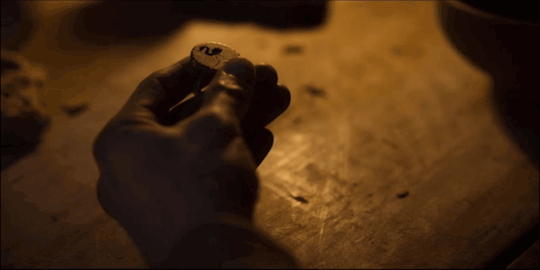



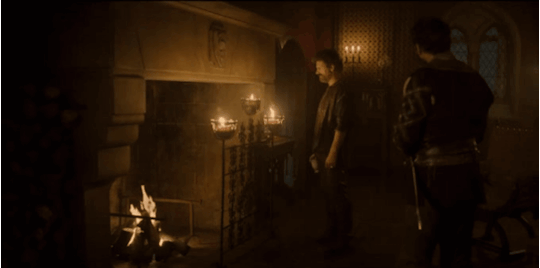

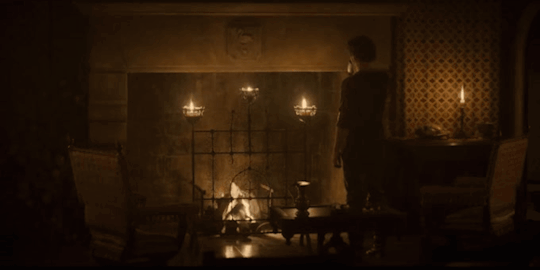
The Estanyol family: etymology and heraldy
This is a continuation of that post, about nature motifs. @asongofstarkandtargaryen
To start, the word estanyol means "small pond or lagoon" in catalan. It's a diminutive of estany (pond).
In addition, if we talk about the coat of arms of the Estanyols, first shown in some banners in episode 6 of La Catedral del mar, it's a swan in a red field and below, a six-pointed yellow star on blue field, and it's shown in some other items during the sequel.
And it's interesting because that sigil is based/inspired in some sigils of the historical Estanyols:
Catalan. Cut: 1st, from... a silver... star, a sable bird.[Ms B-87]
Catalan. Of gold, a mallard of ..., on a terrace, with bushes and herbs at the foot of the water and two crossed fish, of silver; in chief a star of azure. [Ms 3410]
Catalan. Cut: 1st, of azure, an eight-pointed star, of gold; 2nd, silver, a sable bird. [p. Coast, ms] [A. G. Carraffa]
Catalan. of Monells. Of gold, a natural mallard between reeds and cattails of sinople, shores of a great pool of silver, shaded in azure with two tench counterpassing one over the other, in gules, on the forehead an azure star. [Fr. X. de Garma] [A. G. Carraffa]
Catalan. From... a castle of... Seal of Marc Estanyol, a. 1418. [F. of Sagarra]
Catalan. From Sardinia. From azure, a gold star. Coat of arms of Pedro Estanyol, Conseller of the University of the castle of Cáller, a. 1426. [J. Gramunt]
Of Catalonia. It comes from the place of Estanyol, from the judicial district of Girona. Also from a solar house in the town of Monells, in the judicial district of La Bisbal in Girona. Based on references from historians of the time and others found by Araldis in the registry archives of cities and other private ones, we could affirm, but not guarantee, that this shield or another very similar to it, initially appeared from the 11th to the 14th century, particularly in the composition of the troops with which Jaume II conquered Alicante, Elche and Murcia at the end of the 13th century. The references of this family seem to be specified more frequently from the 15 to the 19th centuries, especially the events of Barcelona and Berga, on September 11 and 12, 1714, in which the dynastic war between the Austrians and the Bourbons tragically ended. All this seems to coincide with the family memory of some of the members of the family branch. The study of the family heraldic coat of arms "tells" us about those who formed the origin of the Estanyol family, since that was their function, to show others their differential elements, since the inclusion of the star element is the most widespread figure in the heraldry, its meaning is imprecise, as far as the Peninsula is concerned, but it seems to demonstrate its fidelity to the Church of Rome, by analogy to the meaning in Lombardy and Tuscany, which was membership in the Guelph party (of the Pope of Rome). The enamels of the coat of arms of the Estanyol family proclaim the following values: Azure corresponds to the symbol of water, of the continuity of life, it is a color of nobility, beauty, chastity and fidelity, in addition to other virtues that characterized the family, such as financial abundance, perseverance, luck, fame.
Catalan Heraldry from 1150 to 1550, Martí de Riquer 1983 (8485704347)
Bonus:
While I was doing a bit of research about the family's heraldry, I discovered a genealogy web page with some historical Estanyols, and I found some women during the 16-17th centuries, named Caterina Estanyol, and now my headcanon is that maybe Arnau Jr. will name his daughter or grandaughter after Caterina.
#la catedral del mar#los herederos de la tierra#the cathedral of the sea#heirs to the land#estanyol family#heraldy#gifs#etimology#coat of arms#nature motifs#arnau estanyol#bernat estanyol#mar estanyol#joan estanyol#aitor luna#michelle jenner#rodolfo sancho#pablo derqui
4 notes
·
View notes
Text
youtube
0 notes
Text
Interesting comment I found on a video about the origins of Easter and the goddess Eostra.
Melissa Marsh
"Fun fact: it’s not nearly this simple. The celebration of Jesus’ resurrection is based on the date of Passover because that is a calendar-based Jewish holy day from thousands of years before Jesus and the time when the crucifixion supposedly happened.
So, you know, not based on a pagan spring deity.
When it began to become more widespread in Rome, it was never called Easter. It was derived from the word Pascha which came from “Passover”. In fact, many countries today still call it something that derives from Pascha. It is called Pâques in French, for example.
Where did this Eostra thing come from, then?
Welp, the Venerable Bede wrote that he thought there was a pagan goddess named Eostra that was tied to the Easter celebrations of that time (800AD if I’m not mistake ) but there is literally no other text extant that mentions this goddess. And no other proof.
In fact, it is much more likely that the specific word “Easter” which comes way way waaaaay after the Resurrection (Pascha) was celebrated in the first centuries after Christ, more likely is derived from the Old Germanic word “eostarun” which simply means “dawn.” Not the goddess of dawn. Just, you know, the word for the sun coming up. Which is why Easter is “Ostern” in German. Why did they call it this? A lost in translation snafu between Latin and Old High Germanic.
Were there spring deities and rituals being celebrated by many cultures at the same time? Obviously. Were people of newly Christianized countries highly encouraged (and often forced) to celebrate Easter/Pascha rather than other pagan spring deities or rituals? Absolutely! Religion has always been used as a convenient way to manipulate the masses and wield power.
Is there a much stronger argument to be made that Christmas was established to forcibly supplant local winter pagan celebrations? Also yes. There’s no actual confirmed date for Christ’s birth like there is for his death, since his death is tied to Jewish Passover. So it was a convenient way to get people celebrating how you wanted them to by swapping one holiday with another. Et voilà! Jesus was apparently born in December!
But the whole goddess Eostra thing is a fun, attractive load of conjecture with little more than vague references behind it.
Celebrate pagan spring rituals, or the Christian version of Easter, or just have fun with the Easter bunny and eggs. Or do a mix! We should all enjoy the day as we see fit. Just wanted to clarify the actual history of the holiday and the terminology, in case anyone wanted to know. 😉
Sincerely, someone with two master’s degrees focused
in Anglo-Saxon and Celtic literature, language, and history.
Because I kind of love this stuff."
1 note
·
View note
Link
Check out my latest Books:
Ahora estan disponibles en tienda El Alcazzar.
https://payhip.com/ElAlcazzarBooks
0 notes
Text
Every day I wake up and I restrain myself from correcting people

#blood tw#I know people usually don't like it but#some of y'all should double-check stuff#and yes. this is about an incorrect name etimology#personal#fla speaks
5 notes
·
View notes
Text
One of the first things you will find out about Kazakh people if you come to Kazakhstan is how we are divided.
Not like politically(at least most of the time) but rather culturally.
Because you see. When Kazakh khanate was fully established, it was divided on 3 jüzes(regions) that looked like this:
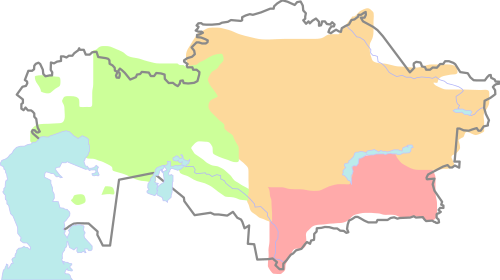
The red one is "Older" jüz, because this where the khanate initially began, the orange is "Middle" jüz as it was added next, and finally green is "Younger"(or "Smaller") jüz. All of these jüzes actually marked the territory where the tribes( and sub-tribes) that made those jüzes were traveling(nomading?).
And guess what! Against all odds(colonization, hunger, oppression) people still use those same jüzes and tribes(called ru) and sub-tribes today.
So for example someone maybe from middle jüz and be of nayman ru.
There is a lot of history and stuff connected to these concepts, like cultural heritage etc, but I would like to note one practical use of this system.
Both in the past in modern days people use these to quickly identify whether they are connected by blood and prevent incest! Cool huh? (also while ru is inherited from the father you still can just ask your mother for hers)
#kazakh culture#kazakh#kazakhstan#this was kinda hard to explain without oversimplifing it#so feel free to ask any questions#(except for my ru)#kazakh language#uhhh#also in modern day kazakh jüz is a hundred#but the actual etimology of the concept's name is unknown#also all of these are kinda connected to politicz#but i tried to avoid them in this one#i will shut up now
10 notes
·
View notes
Text
Madame Putiphar Read Along: Prologue
so it begins!! :D
(I am using the Valdemar Gótica edition in charge of Mauro Armiño, and the french text in gutenberg dot org)
Prologue
(The work is dedicated to L.P., Lucinde Paradol, an actress Petrus had loved since 1831)
The Poet sets the scene within his sombre heart. 3 Knights battle in it for its dominion, with ceasless fury. The Poet’s agonic cries only increase the knight’s bloodlust. The struggle will be lifelong, the Poet knows he has no choice in the outcome, and he knows the victory of one of the Knights will be his doom.
The knights represent a classic allegorical theme: the Three Ages of Man. But also three attitudes:
-libertinage and artistic glory,
-religious or intellectual seclusion,
-suicide, a clean death before the world and its ways forces the Poet to compromise himself
They also reflect in a general structural way, the vital paths of our characters. This pattern of the three possible paths, the three ages of men, is very ancient. In western culture we usually start with greek philosophers and matematicians considering it the perfect number, a number that encompassed the three narrative acts. It’s a recurring theme in most religions, fairy and folk tales, and mythology. It is also a number that seems to appeal to how our brains work, easing the comprehension of decades spanning events in narratives: in fairytales, we usually get 3 attempts at the same magical action before the character succeeds, in cinematic editing when a character coughs 3 times, we know the illness is grave enough to be deadly.
Closer in time to Borel, and worth mentioning since we know the author is one of his influences, there’s a Diderot book, The Skeptic’s Walk, that follows this same format. Finished in 1747 but like most of Diderot’s fiction, it was published posthumously, in 1830. In it a philosopher and his friends get lost in symbollic garden paths made of roses, thorns and chestnuts, each representing pleasures of the flesh ->roses, agonies of futile religious deprivation ->thorns, and finally chestnuts-> the wisdom of Philosophy. In a pretty anti-enlightenment move, Diderot’s character ends up running into “the type of blonde philosophers should avoid”(a line that seems out of a noir) an escapee from the path of the roses, she urges him to choose the palpable reality of sensual joys. He agrees, and occasionally picks sensuality over intellectual pursuits.
But enough preambles, let us present our allegorical knights:
Our first knight is “young, fresh and alert” He wears a steel corselet which glistens under a net of green cloth like a glacier glimpsed from between pines. His color, green like the verdant, fertile forest of Youth. But what this luscious fields hide is the frozen desert of the glacier. He is blond, beautiful, his eyes reflect love. His portrait is adorned with refernces to Spain: rides an Andalusian horse whom the the Knight of Youth makes shiver when manipulating his dagger and rondell like a vain toreador. (I don’t feel confident enough yet to try and say what Spain means for Borel, but his feelings towards Spain, the Spanish language and hispanic cultures are usually very positive)(so let’s say these allusions render him more appealing)
Enter the Second Knight. His characterization is compossed of references to christianity and the gothic: He looks like a reliquary. His donkey’s protruding bones make the animal resemble a rosary, covered with a shorn horse blanket that would catch the eye of an antiquary for it could be that of Queen Isabeau, travelling from Bavaria to France (her attire for the occasion was especially lavish)
He is fat, greasy, his breathing: laborious and loud. The anthitetic starving donkey carrying the heavy knight makes the spectator think of Shrovetide carrying Carnival on its back. However, the knight himself is made of anthiteses and contradictions. He looks like a glutton, but wears the attire of a penitent monk. (foreshadowing perhaps a priest in the novel who is not as chaste as he should be) He drags his habit through the ground, staining the holy clothes. He wears the hood because in order to “sell himself to the heavens” he has to conceal who he is or perhaps what he does. While he preaches virtue, sitting with his legs wide open (the expression Borel uses, à califourchon, is possibly composed of the ancient breton word for testicules) on his frail donkey, he is inspired by Sabaoth, the avatar of the Lord when leading the armies of the angels in Judaism. (there are many interpretations of this version of God and this name, and I am not well versed in Judaism, but from the context, he seems to be preaching virtue while sitting in a somewhat obscene manner, inspired by a war-like deity of another religion) He insults, curses and swears, arrogantly challenging his two rivals. These insults are backed by a huge mace. This second knight is completely drenched in blood and kisses a crucifix. To sum it up, he is older, dirtier, bloodier, associated with phallic and christian imagery, his appereance of weakness is decieveing. His attitudes span widely between the pious or the violent.
We meet, finally, the Third Knight. He is like the Comander in the Don Juan mythos, a man of stone. (based on the spanish folk tale of the “convidado de piedra”, the guest made of stone is the funereal monument of the Comander’s grave, who Juan Tenorio mockingly invites to dine after realizing he killed him when the Commander tried to avenge the rape of his daughter. The commander famously represents Death, shows up to Juan’s supper and invites him to dine with him in Hell instead.) He is horrifying and lugubrious. When hit by the other knights, he makes the sound of a hollow tomb. He is pretty much a grim reaper made of stone, he carries a scythe, which weeps streams of blood, carries a hunter’s trap from which a hanged man swings, grimmacing in a grotesque manner. Instead of a scimitar he carries a fisherman’s hook, from which tiny nets filled with worms and larvae hang. (is this a reference to the fisherman imagery in christianity? With an ironic twist because the paradise the stony knight offers is the absolute nothingness of the grave)
The 1st Knight, represents our tangible world. He attracts the narrator with crowns of flowers, and gallantly covers any puddles the poet finds in his path with his cloak, and wipes off his tears.
Now it’s the turn for the knights to address the Poet, and the language becomes erotic: the knight of Youth wishes the poet to give in to him completely, without restraints or remorse. He wants him to dive into his chest, abandoning himself to the oscilations of the vermillion waves within it. He is the joyous, smiling side of the world, which opens itself to the youth of the narrator, revealing a future of magic from which the days of his glory will spring. It’s the world of stars and dreams but also the world of prostitution and voluptuosness. The knight of Youth offers all the pleasures of the World, he will fullfil all of the Poet’s possible desires: voluptuos women, banquets, dances, glory.
The second knight with the kindly air, serious attitude and a face made sombre by loneliness, repressents the Cloister, where the love of the Lord emmanates in streams. The Cloister Knight claims the narrator for himself, because the tangible, sensual World is a mirage, everything in it vanishes like a dream, glory and the dream of posterity are only masks pride likes to wear. It is a vain entreprise to raise onseself a living monument, because the world forgets it all. Carnal love is impure. He must join the Second Knight in the Cloister to presserve the virginities of his soul. The Cloister is not only religious, if meditation doesn’t captivate him, he can always explore wisdom and science, but never Philosophy, (the enlightenment group were notably called the Philosophes, -a word that was used to design an intellectual- and they usually opposed organized religion) which defiles the wonders of Christ.
The third Knight, the eternal leverler, the implacable reaper, whom the narrator strokes and secretly honors, (the only one of the Knights the Narrator tells us openly how he feels about) is the Void: Death. As he is ancient, he adresses the Narrator as a child, and invites him to probe into his earthy body, to drown in his muddy, shadowy chrysalis. He forgets to harvest no grape of the vine of humanity, so why wait until pain has shattered his heart to blow out his candle? Death, the Knight claims, is Our Lady of Joy and Salvation! The grave: the Promised Land. He urges our Poet not to listen to the rhethoric of the Cloister, it promises rest but Man is trapped by his obsessions in it, like Saint Anthony, who suffered tempted like a Satyr in the desert: The Cloister is the same as the World without the posibility of fullfilment or satisfaction. Joy is only possible underground where one is safe from fake friendship, ambition or lost illusions. Absolute nothing is an abscense, a dead lightning, a botomless sea, a void without an echo.
Thus, capitulates the Poet, have combated the three knights for years without quarter. His heart is wounded by this constant struggle because it’s doubtful, religious, crazy, mondain, and unbelieving at the same time. But it’s a matter of time, one of the Knights will vanquish the others and the Poet will perish, a prey of either the World, the Cloister or the Void, and he has no choice in the outcome.
We know all the knights’s paths are fake, Youth appears fertile but conceals a heart of ice, Cloister preaches virtue and science but is a licentious, violent man, Death promises rest, but is shown torturing its victims. The Poet is harrased by the three incarnations of paths he knows are purposely deceitful, attempting to seduce him with mirages. Life, he tells us at the beginning of the poem, is pain in bloom, nothing in life is real or worthy, except perhaps this struggle, and the Poet’s realization that these options are deceitful.
#madame putiphar#long post#text post#rape mention#suicide mention#this poem is such a vivid experience#i love it#beautiful use of language you just picture everything in your head#also worthyof mention: the subversion of the champions competing for the heart of the princess trope#putiphar posting#please feel free to chime in#q#got the à califourchon etimology from larousse online but i cannot make the link work :p#sainteverge and counterwiddershins are doing this as well
12 notes
·
View notes
Note
as a hungarian can you understand some finnish? does it sound similar to your language?
not at all unfortunately 😭
#maybe umm smarter hungarians could do it...? especially like hungarian majors#i know in hs they make u learn the origins of some basic words like i know kéz for example is finno ugric and finnish would have something#similar#so ppl who study more etimology could be better at finding similarities????? girl honestly i have no idea#But its nothing like slavic or romance languages#ask
2 notes
·
View notes
Text
Kopi
Kopi Indonesia | Etimologi | Jenis | Sejarah | Cara Membuat | Cara Pengolahan
Kali ini kami akan memperkenalkan sejenis minuman yang sangat banyak diminati oleh berbagai kalangan di dunia yang disebut Kopi. Kopi, merupakan minuman hasil dari seduhan biji kopi yang telah disangrai dan dihaluskan menjadi bubuk.
Kopi
Minuman ini merupakan salah satu komoditas terbesar di dunia yang dibudidayakan…

View On WordPress
#caffeine#cara membuat#cara pengolahan#coffe#coffee history#coffee maker#drink#etimologi#etymology#good trend#home drink#how to make#indonesia#indonesian coffe#jenis kopi#kafein#kopi#processing method#robusta#sejarah kopi#type coffe#type of coffee
2 notes
·
View notes
Text
i am going to bite academia like yes physically the concept of academia as a whole
#context: writing my thesis on therapy and PTSD#and i can’t write ‘cognitive therapy is an effective treatment for PTSD’ cause that isn’t specific enough boo-hoo#i have to say ‘cognitive therapy has a negative effect on PTSD’ though it doesn’t make ANY SENSE#it’s negative and not positive because ‘it makes it so there’s less symptoms so it’s negative because negative means something is removed’#AND I’M JUST SUPPOSED TO IGNORE THAT THE WORD NEGATIVE GENERALLY MEANS BAD???#if i read ‘a negative effect’ i am so sorry but i will think ‘oh so it makes it worse’ not focus on the etimology#this feels like the color theory post bite bite kill kill
2 notes
·
View notes
Text
Banu Qasi triology: Words & Etymology
'amil: local chief. Plural: 'ummāl
'amil al-bahr: 'almirante', admiral
'arif: low ranking officer
'arif al bannā: master builder
albannā: 'albañil', construction worker
albáytar: 'albéitar', precursor of the current veterinarian
al'ard: 'alarde', pre-departure ceremony for a military campaign
albardí: esparto-like plant
(This plants are either called atocha, esparto or albardín)
alfaquí: priests and teachers, specialized in religious subjects, both in terms of their teaching and their application
algara: revolt
alhabáqa: 'albahaca', basil
alhínna: 'alheña', henna, dye used for its magical and cosmetic properties. It is used to dye the hair and to beautify the hands and feet.
almuwádan: 'almuhédano', muezzin, person in charge of the call to prayer in the mosques
alqabála: business transaction tax
alqasába: 'alcazaba', fortress
alqásr: 'alcázar'
alqáyid: 'alcaide', warden
alqaysaríyya: 'alcaicería', area of the market reserved for the most valuable objects
al-quitrān: 'alquitrán', tar
al jurs:" the mute", elite guard corps of the successive emirs
alkuhl: alcohol
almúnya: country house used as an occasional residence, located in a cool area, with an abundance of water and vegetation
alqutún: 'algodón', cotton
amān: amman, pardon in exchange for laying down arms, capitulation treaty
as sayyida: the Lady, referring to the emir's first wife
asaifa, sa'ifa: the 'aceifas' were expeditions of the Cordovan army against Christian areas that took place during the summer period, at times almost annually. In many cases it was the emir himself or some of his sons who led them
asfarag: 'esparragos', asparagus
ashsharín: 'aserraderos', sawyers
assánya: 'aceña, noria'
assutáyah: 'azotea', rooftop
assúd: 'azud', weir, prey
attahúnna: 'tahona', bakery, bread oven
azza'farán: 'azafrán', saffron
bābūs: 'babuchas', light shoe without heel
bait al mal: religious community treasure, amount of money, destined to the relief of the most needy and the payment of the expenses derived from the operation of the mosques
baraka: luck, blessing
baskiya: name of the Arabic sources of the Basque language, incomprehensible jargon for them, which is why it is classified as "barbaric language"
baskunish: basques
bilawar: ornaments made from stringed beads, origin of the Spanish word 'abalorio", bead
burj*: tower
*the name of town of Borja in Aragon comes from that word, also the male name Borja and the surname Borja, the noble family of the Borjas probably were from that town, and when they moved to Italy, their surname was adapted as Borgia (in other post I wrote that Teruel comes from Tirwal, meaning tower, because in some sites that etimology I read that it comes from Arabic, although the Arabic word for tower is burj, so maybe Tirwal is a kind of Arabized form of the latin word for tower, turrem/turris, like Guadalupe means River of wolves because the lubb in Wadi al-lubb comes from an Arabized form of the latin word lup)
comes: count, highest representative of the Mozarabs in a city, in charge of collecting their taxes
dā'is: Fatimid missionaries in charge of spreading the Shiite doctrine
dar al raha'in: hostage house
*(the word 'rehén', hostage, comes from the Arabic raha'in)
dar al sina'a: 'dársena', dock
dimmī: member of Christian or Jewish minorities subject to Islam
dinar: gold coin used during the emirate
dirhem: silver coin used during the emirate
dīwān: set of offices grouped within the alcázar that made up the central administration
drakaar: dragon
fals: low value copper coin
falūkah: shallow draft sailing boat to go up rivers
faquí: 'alfaquí', alphaqui, doctor or scholar of the law
fata: slave, eunuch
fitna: revolution, civil war
fityán: page
funduq*: warehouse where merchants deposited their stocks and their place of accommodation. Origin of the Spanish word 'alhóndiga'.
*or al fundaq, that derived as alfóndiga in old Castilian, and then to alhóndiga
galasqiyin: gascons
gallasa: a woman in charge of the female area of the public baths
ghasul: Clay made with cloves, lavender and rose petals to beautify hair
gūrab: "crow", warship similar to the galley, with a highly variable number of oars. Plural: girbān
hadra: capital of the kūrah or province
hammam: arabic bath
haram: main prayer hall of the mosque
harem: 'harén'
harrāqā: warship supplied with naphtha
hasīs: 'hachis', hashish, the consumption of opium in Al Ándalus is attested from the 10th century, due to the appearance of remains of bowls to consume it.
hachib: position of maximum responsibility in the court of the Cordovan emirs, direct head of central administration, military and provincial
haffarín: laborers, diggers
haymah: 'jaima', tent, usually made of camel skin
hisba: market admission and regulation treaty
hisn: castle, fortress. Plural husun
Id al Adhà: lamb feast, one of the main celebrations in the Muslim calendar, which falls on the tenth day of Dul Hijjah
imām: 'imán', imam, spiritual or religious head of a Muslim community
jarayaira: prostitute who worked in a brothel or dur al jaray
jassa: group made up of the aristocracy, the dominant families of society and the main dignitaries of the government and the army
jatam: Royal seal
jayyarín: 'caleros'
jizya: burdensome tax that non-Muslims from Al Ándalus had to pay
jund: troops of Syrian origin who participated in the early days of the Arab conquest. Plural: junud
katib: senior civil position in the Cordoba administration
khalífa: 'califa', caliph
kuhl: kohl, powder made with antimony, toasted olive and date pits, and cloves, which beautifies the eyes and highlights the look
kunya: nickname used in Arabic onomastics
kūrah: 'cora', kora, each of the emirate's administrative divisions, similar to a province or district
madinat: 'Medina', city
mahalla: military camp
maqbara: graveyard
maqsura: enclosed space inside the mosque of Córdoba that improves the security and privacy of the emir
mawla: client, person linked to another by a client relationship. Plural: mawali
maylis: literary gatherings
mayûs: also madchüs or machüs, Normans, Vikings. Arab chroniclers also use the names alurdumâniyûn or nordumâni
mihrāb: niche located in the wall of the mosque facing the Qibla and in the direction of Mecca
minbar: kind of pulpit, usually made of precious wood and ivory, where the preacher would sit to deliver the sermon in the mosque
muhandis: construction technician, engineer
muladí: descendant of those inhabitants of the peninsula who, after the arrival of the Arabs, spontaneously submitted and embraced the Muslim religion. They constituted the majority group of the population together with the Mozarabs (from Arabic mustarib: arabized), who maintained the practice of Christianity, subject only to the payment of special tributes (jizya).
muqrif: 'matarife'
musalla: outdoor enclosure in many Muslim cities, facing Mecca, which served as an open-air oratory
musara: 'almozara", open and wide space outside the cities in which equestrian exercises, horse races, demonstrations and military parades were held
muwalladun: muladíes
muwassaha: 'moaxaja', Arabic poetic or musical composition
muzdamin: civil head of the Jewish aljama (the rabbi was the religious leader)
nabarrus: It seems probable that since the 8th century the users of the nabar or plowshare in Old Basque were known as nabarrus in the Pamplona region, that is, the peasant population
nāfta: incendiary material used in naval warfare
naggafat: mistresses of ceremony
najjarín: carpenters
naqib: commander of a two hundred-man battalion in the emirate army
na'úra: noria
nazir: head of an eight-man squad in the emirate army
neggacha: specialized woman to compliment the bride in the ritual prior to Muslim weddings
pasaranga: itinerary measure equivalent to 5250 meters used by the Persians since ancient times
politeístas: term commonly used in Arab chronicles to refer to Christians, alluding to the conception of God as three different people
qa'id: commander of a thousand-man battalion in the emirate army
qabila: Muslim midwife
qādī: Muslim judge *(other form of this word is alqádi, that derived into 'alcalde', mayor in Spanish)
qafiz: Arab unit of measurement of variable value according to the area and the time
qamís: front buttoned garment
qarāqir: 'carracas', argosy, merchant ships
qasí: belonging to the Banu Qasi clan
qass: storyteller. On market days it was common for mubahrich (puppeteers), la'ib (presdigitators), muhli (minstrels), hasib (fortune tellers)
qubba: Royal pantheon that served as accommodation for the Emir of Córdoba during the expeditions
*(al qubba is the origin of the word 'alcoba', meaning bedroom or bedchamber)
qumis: Arabized denomination of the old Christian Comes, head of the Mozarabic community in each city, in charge of relations with the Muslim authority and especially the collection of taxes
qurtubí: relating to Cordoba
ra'is: Captain of boats, in charge of navigation, while the qa'id holds the military command
sabat: elevated walkway over the street that linked the alcazar with the mosque of Cordoba, for the exclusive passage of the emir
sabun: 'jabón', soap. In Muslim Spain, a rudimentary soap made from olive oil and wood ash was used.
sahib*: Lord, formula of respect before a superior
* or sayyid, from which the name of Cid comes from.
sahib al 'ard: quartermaster general, in charge of reviewing ('ard) the weapons and equipment. From the Arabic term al'ard comes the Spanish 'alarde' *(and the verb alardear, both meaning something like to boast, to brag)
sahib al abniyā: master mason
sahib al madina: city prefect
sahib al suq: head of the souk, later he would become the muhtasib or almotacen, an official in charge of ensuring compliance with Islamic norms, and specifically for the proper development of commercial transactions in the souk
sahib al surta: Police chief
salat: there were five calls to prayer, salat al fajr, or also called salat al subh (dawn prayer); salat al zuhr (at the instant the sun begins to decline); salat al 'asr (mid-afternoon prayer); salat al maghrib (a few minutes after sunset) and salat al 'asa or salat al'atama (one hour after sunset)
salaqiba: slaves from Slavic countries, of great importance during the emirate of Córdoba
samra: night party, evening party, sarao, origin of the Spanish term 'zambra'
sāwna: warship similar to galley. Plural: sāwani
sarauil: breeches or 'zaragüelles'
shari'a: Islamic law
shura: Islamic assembly
siqlab: plural of salaqiba
sirtaniyyun: Cerretans, Aragonese
suak: walnut bark
sudda: prey
suq: 'zoco', market, souk
tābiya: construction technique, formwork
tafaya: dish made with slow-cooked coriander broth, pepper, onion, oil and water, to which meatballs and crushed almonds are then added
tahlil: small leather box in which Muslim soldiers used to carry relics, prayers and exclamations of profession of faith
tiraz: workshops controlled by the emir in which fabrics considered luxury items are made
ulema: doctor of Islamic law
umm walad: concubine mother of one of the emir's sons
wālī: 'valí', governor of a province or part of it
wazīr: 'visir', vizier
yabal: mountain
yamur: top of the minaret formed by golden spheres of decreasing size
yenun: evil genies
yihad: Holy war
yilliqiyun: denomination that the Arab chroniclers give to the Asturians
zakat: taxes that Muslim families had to pay in Al Ándalus
zakat al suq: market rights
zandaqa: crime of heresy
zanáti: Origin of the Spanish word 'jinete*', rider
* I made a post some time ago about history, etimology of this word and genets (and an Asoiaf related drawing about a silly idea I thought)
Locations II Characters
1 note
·
View note
Text
today ive learned that the name of my city means "lobster hunter"

there's no lobsters here. never have been
1 note
·
View note
Text
I don't know why this just occurred to me but "family" LITERALLY comes from the latin word for servant!!!!! (famulus) and it means the property of the master (blood relatives, servants and slaves). so do with that
0 notes
Text
Etymology, English, Brusque
Etymology
The adjective is borrowed from French brusque, from Italian brusco (“abrupt, sudden, brusque; brisk; eager; sour, tart; unripe; grim-looking”); further etymology unknown.
The verb is derived from the adjective.
Pronunciation
(Received Pronunciation) IPA(key): /bɹʊsk/, /bɹuːsk/, /bɹʌsk/
(General…
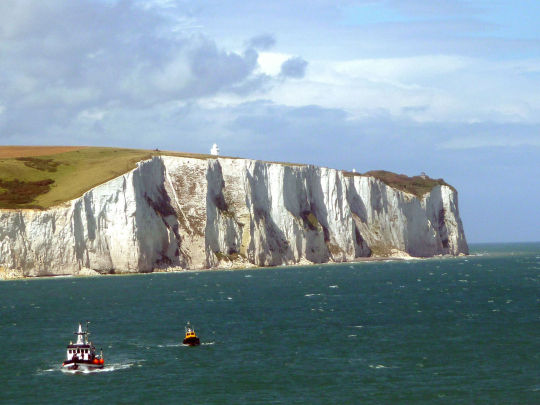
View On WordPress
0 notes